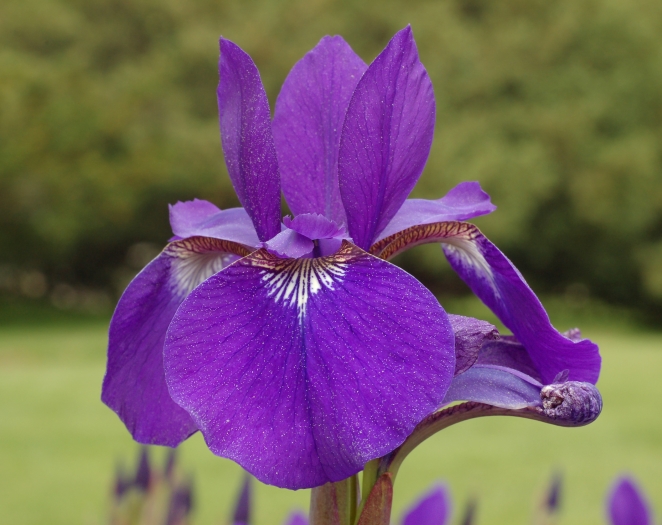Siberian Iris
(Iris sibirica)
Siberian Iris (Iris sibirica)
/
/

(c)2007 Derek Ramsey (Ram-Man)
GFDL 1.2




















































Estimated Native Range
Summary
Siberian iris is valued for its hardiness, low maintenance, and resistance to deer and rabbits, making it a popular choice for temperate gardens. It is often used in waterside plantings, as it can tolerate moist conditions, and is also effective in herbaceous borders, naturalized gardens, and meadows. While it prefers full sun, it can tolerate part shade, especially in hot, arid regions where it benefits from some afternoon shade. The plant requires well-drained, fertile soil with a neutral to slightly acidic pH and benefits from the addition of organic matter at planting. Siberian iris is hardy to USDA Zone 2–8, and Zone H1, indicating its ability to withstand very cold temperatures. Mulching in winter can help protect the rhizomes in colder climates. Over time, clumps may become dense and can be divided in late summer to rejuvenate growth.CC BY-SA 4.0
Plant Description
- Plant Type: Herb
- Height: 2-3 feet
- Width: 1-2 feet
- Growth Rate: Moderate
- Flower Color: Blue, Purple, White
- Flowering Season: Spring
- Leaf Retention: Deciduous
Growth Requirements
- Sun: Full Sun, Part Shade
- Water: Medium
- Drainage: Medium, Slow
Common Uses
Bank Stabilization, Bee Garden, Bird Garden, Border Plant, Butterfly Garden, Deer Resistant, Drought Tolerant, Hummingbird Garden, Low Maintenance, Potted Plant, Rabbit Resistant, Rock Garden, Salt Tolerant, Showy Flowers, Street Planting, Water Garden
Natural Habitat
native to damp meadows, riverbanks, and grassy slopes of Europe and West and Central Asia
Other Names
Common Names: Siberian Flag, Sibirisk Iris, Wiesen-Schwertlilie, Sibirische Schwertlilie, Iris De Sibérie, Sibirijas Skalbe, Siberische Lis, Strandiris, Sibirisk Svärdslilja
Scientific Names: , Iris sibirica, Iris bicolor, Iris pratensis, Iris acuta, Iris flexuosa, Iris maritima, Iris sibirica var. albida, Limniris sibirica, Biris sibirica
GBIF Accepted Name: Iris sibirica L.